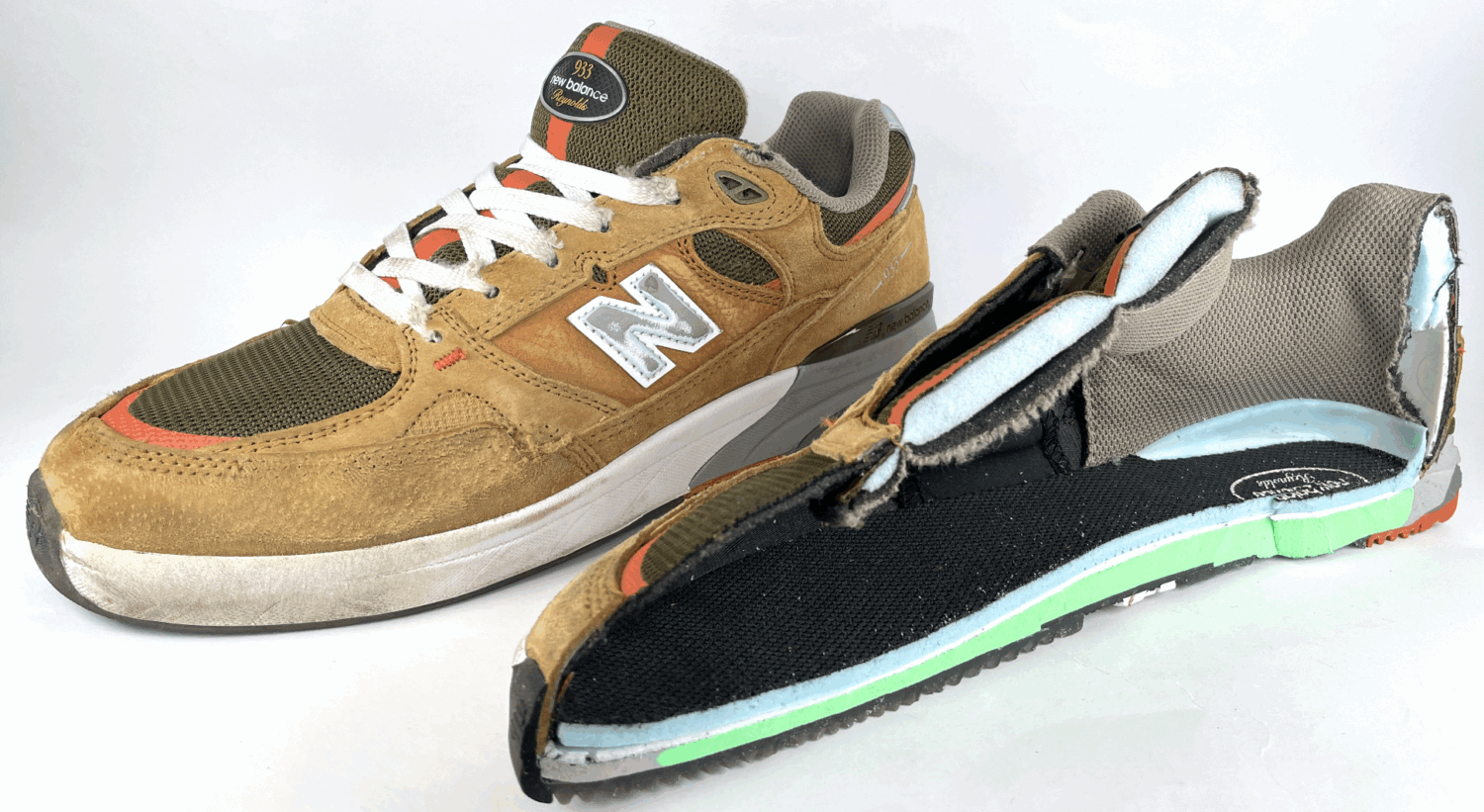
There’s no question – Andrew Reynolds helped define one of skateboarding’s most iconic eras. From the way skaters dressed, skated, and carried themselves, Reynolds’ influence ran deep: hi-jinx, skinny jeans, and those perfect frontside flips. During the heyday of Altamont, Emerica, and Baker, he was leading the charge. If you were in middle or high school at the time, chances are you had a pair of Reynolds pro models – I had the Reynolds 3s, complete with the fake diamond lace charm.
Watching Reynolds grow over the years has felt personal. From going sober to raising a daughter, his journey has been public and inspiring. And while many of his peers from that era have faded into the background, The Boss is still out there – pushing, progressing, and setting the gold standard for what a long pro skate career can look like. When New Balance Numeric added him to the team in 2022, it felt like a new chapter was starting. A pro model was inevitable.
True to form, Reynolds didn’t just slap his name on a shoe, he obsessed over it. Known for his “Madness” (a ritual of doing three things three times before committing), he brought that same precision to designing the New Balance 933. The result? A shoe that blends the aesthetics of a runner with the tech of a basketball shoe – engineered specifically for skateboarding.
Built in collaboration with Jeff Mikut, the 933 is a culmination of years of experience, style and meticulous design. For an in-depth look at the process, check out Shredz’s interview with Reynolds – it’s a wild dive into just how hands-on he got and also cut up the shoes in Weartested style. We got our hands on a pair and put them to the test. Read on to see how they held up.
The Reynolds 933 fits true to size with a snug feel, so we recommend trying them on at your local skate shop.
Overall, the Reynolds 933 delivers solid durability, let’s break it down. The upper features multiple layered panels throughout, which stiffen the structure and help the shoe retain its shape over the course of our 10-hour test. The tradeoff with this construction is the abundance of stitched seams, which can be easy targets for grip tape abrasion. In the case of the 933, most seams and leather panels held up impressively well, with the exception of the toe panel, as it’s the highest wear zone. The ollie and kickflip areas showed the most damage, with most of the triple stitching in that section torn. However, the leather kept its shape, preventing any major tearing or deformation.
The sidewalls of the sole, another common wear point, held up excellently, offering solid protection for the toe area. The outsole’s tread pattern also stayed in great shape, showing minimal signs of wear.
The sole construction of the Reynolds 933 is key to its cushioning performance. Designed as a cupsole, the outsole is made up of multiple layers that work together to stabilize and support the shoe’s main cushioning element. It’s a green foam insert visible through both a cutout window and the translucent rubber outsole. New Balance Numeric refers to this as the ABZORB midsole, engineered to absorb impact through a combination of cushioning and compression resistance.
Compression resistance is a standout feature of the ABZORB foam used here. The material feels notably firm, which enhances its ability to withstand repeated impacts without bottoming out or deforming over time. On top of that, the shoe has a molded insole that adds a nice layer of step-in comfort. Together, these elements create a stable, consistent, and protective cushioning experience.
The Reynolds 933 has a distinctive and well-considered shape. Viewed from the top, it runs parallel through the midfoot before tapering into a clean, rounded toe. From the side, the silhouette shows a noticeable amount of volume, giving the shoe a bold presence. The heel is slim and sits at a comfortable height, while the padding around the tongue and collar is well balanced – providing support without feeling bulky, whether you’re wearing or skating in them. As mentioned earlier, the layered upper reinforces the structure, helping the shoe maintain its form and resist collapsing over time.
Boardfeel is where the Reynolds 933 falls short. The combination of a firm sole and a reinforced upper makes for a stiff ride out of the box, requiring a few sessions to break in. While the sole and midsole do soften slightly over time, the boardfeel remains average. Despite efforts to thin out the material layers in the forefoot, the cupsole construction still feels thick and unresponsive compared to more flexible models.
With regards to the grip, the Reynolds 933 is good, providing a grippy feeling out of the box. In addition, the rubber outsole used held up well during the 10-hour wear test.
One of the standout strengths of the Reynolds 933 is its dialed-in comfort and rock-solid stability. Lightweight with a performance driven fit, the shoe achieves a locked-in feel through a smart combination of design elements. The padding of the heel area and tongue helps to lock the foot and ankle into a deep, supportive pocket, contributing to the shoe’s secure fit. Elastic straps anchor the tongue in place, keeping everything centered and secure during intense sessions.
The upper’s material mix is equally well-engineered. Durable leather in high-wear zones for durability, while breathable mesh panels cut weight and improve airflow. Stability, often overlooked in skate shoes, truly shines here. Over 10 hours of wear testing, the structure held firm with minimal deformation, a clear sign that this shoe is built to last.
The Reynolds 933 excels in stability, comfort, and impact cushioning, with a snug, supportive fit and a well-engineered sole that holds its structure even after extended wear. While durability is solid overall, boardfeel and grip land in the average range, with a stiff sole that takes time to break in.
